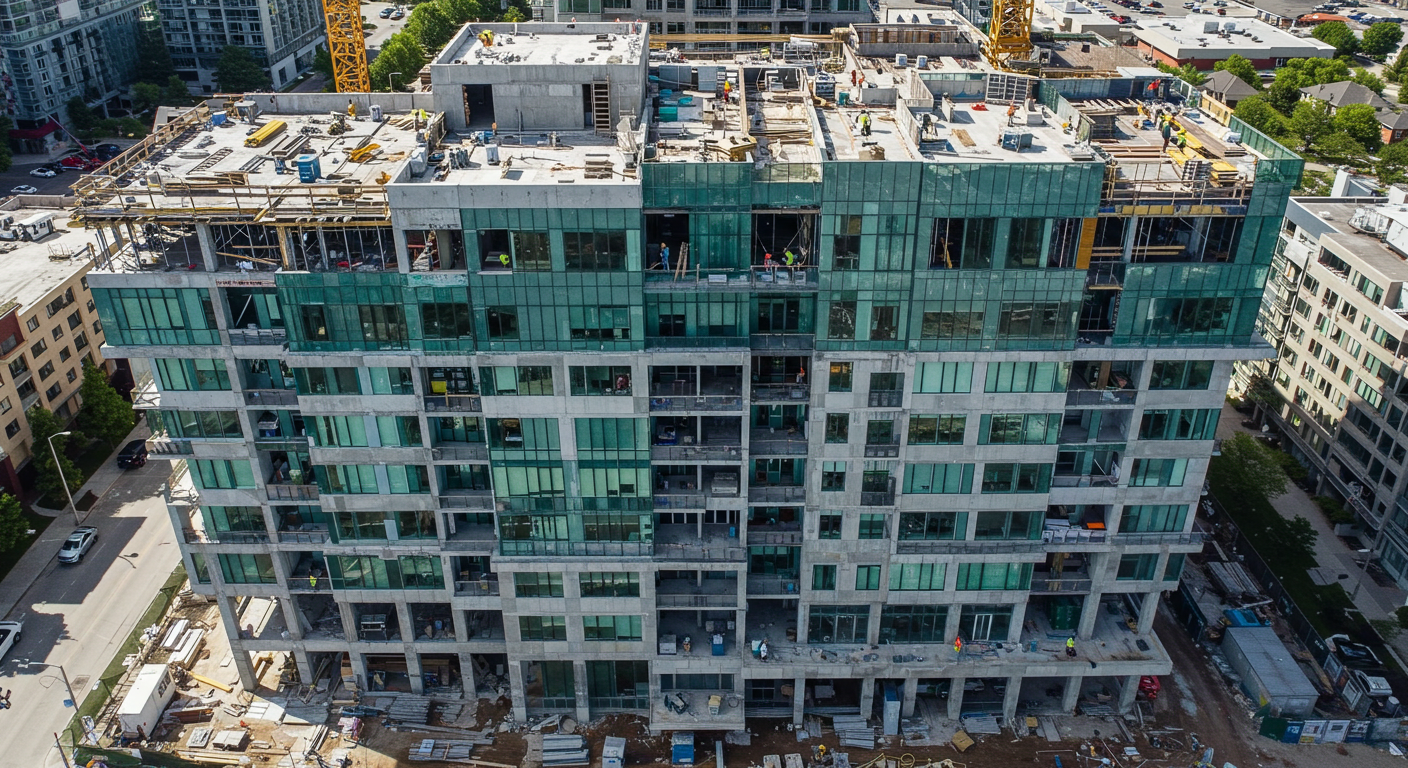
A new generation of condominium developments is set to hit the U.S. housing market after 2026, capturing the interest of a diverse range of buyers. These projects are particularly appealing to those seeking modern, low-maintenance living, from first-time homebuyers to retirees looking to downsize, and even investors interested in rental opportunities. Understanding the benefits, potential drawbacks, and financial considerations of condo ownership is essential for anyone considering this type of property.
What’s on the Horizon: Cities Leading the Charge in Modern Condo Development
Several U.S. cities are emerging as hotspots for new condominium projects. Cities like Austin, Miami, Nashville, Phoenix, and Seattle are expected to unveil developments featuring energy-efficient appliances, sustainable building materials, smart home integrations, and thoughtfully designed shared spaces. Rooftop terraces, co-working areas, fitness centers, and lounges are increasingly standard, providing convenience and lifestyle benefits for residents.
Prime locations near public transit, shopping, dining, and cultural attractions enhance the appeal of these developments. For many buyers, the opportunity to move into a modern, move-in-ready unit with minimal maintenance is a key attraction. Developers are also incorporating environmentally friendly features, such as solar panels, water-saving fixtures, and high-efficiency HVAC systems, which reduce utility costs and support sustainable living.
The Benefits and Trade-Offs of Condo Living
Condo ownership comes with several lifestyle advantages, especially when it comes to convenience and amenities.
Key Benefits:
- Homeowners are not responsible for exterior maintenance, landscaping, or structural repairs, as these are managed by the homeowners association (HOA).
- Many new buildings provide amenities such as gyms, pools, lounges, and shared workspaces included in monthly fees.
- Modern security systems, including keycard access and surveillance cameras, enhance peace of mind.
- Condos are often located in walkable neighborhoods with easy access to restaurants, shops, and entertainment options.
- For investors, condos in fast-growing cities can generate steady rental demand and provide potential appreciation over time.
Potential Drawbacks:
Condo living does come with trade-offs. Monthly HOA fees can be substantial and must be paid regardless of whether you use the amenities. Privacy may be limited because you share walls, hallways, and elevators with neighbors. Many condo communities enforce rules regarding pets, noise, short-term rentals, and even certain aspects of interior decor. Outdoor space is usually minimal, often restricted to a balcony. Additionally, condos may not appreciate in value as quickly as single-family homes, and selling can be more challenging if many similar units are available.
Understanding the Costs of Living in a Modern Condo
While the purchase price of a condo is often lower than a comparable single-family home in the same area, monthly costs can add up. These typically include the mortgage, HOA dues, utilities, condo insurance, and property taxes. Some utilities may be included in HOA fees, but electricity, internet, and other services are usually separate.
Here is an estimate of monthly expenses for a modern two-bedroom condo in major U.S. cities, including mortgage, HOA fees, utilities, and taxes:
- New York City: $5,500–$7,500, with premium HOA fees often exceeding $1,500
- San Francisco: $5,000–$7,000
- Los Angeles: $4,000–$6,000
- Miami: $3,000–$4,800
- Chicago: $2,400–$3,600
- Austin: $2,800–$4,000
- Phoenix: $2,200–$3,500
- Charlotte: $2,000–$3,200
- Seattle: $3,500–$5,000
- Denver: $2,800–$4,200
- Atlanta: $2,200–$3,400
- Boston: $4,500–$6,500
- Washington, D.C.: $4,000–$6,000
- Philadelphia: $2,800–$4,200
Actual costs depend on unit size, location, building age, and included services. Buyers should calculate total monthly outlays before committing to a purchase.
How to Find the Right Brand-New Condo
Securing the perfect condo requires careful planning and research. Start by identifying upcoming developments in your preferred city and note the projected completion dates, floor plans, and available amenities. Visiting model units or attending open houses helps you understand space, finishes, and overall quality.
Working with a real estate agent who specializes in new construction is highly recommended. They can provide insights into pricing trends, builder reputations, and potential incentives such as early-buyer discounts or upgraded finishes. Carefully review HOA documents to understand fees, rules, and what is covered. Additionally, evaluate the neighborhood’s long-term growth prospects and resale demand to assess the property’s investment potential.
Final Thoughts: What the Next Generation of Condos Means for Buyers
As more modern condos become available after 2026, buyers will have greater access to stylish, low-maintenance living in dynamic urban areas. While condos may not suit those who desire large outdoor spaces or complete privacy, they offer convenience, amenities, and prime locations that appeal to a broad range of buyers.
By thoroughly researching the market, weighing the benefits and drawbacks, and planning for all associated costs, prospective homeowners can find a condo that fits both their lifestyle and long-term financial goals. For many, this new wave of condominium developments represents an exciting opportunity to embrace modern city living with minimal hassle and maximum comfort.
